Soil Biota
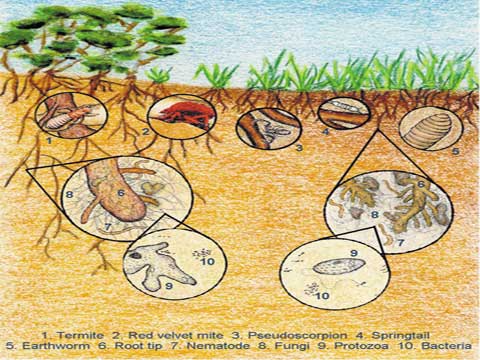
Organisms that live in the soil range from very small microbes such as bacteria, to large macro-organisms like ants and earthworms. A diverse community of soil biota helps create a healthy soil environment
Image from U.S. Department of Agriculture
Fungal hyphae
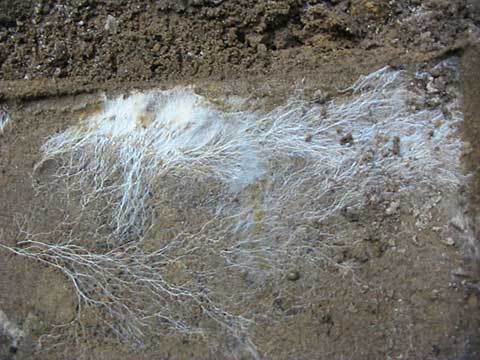
Hyphae are below ground branching filaments of fungi and are collectively called mycelia. Mycelia are often connected to plants through their roots – the mycelia help the plants by providing greater access to nutrients and water
Photo from Wikimedia Commons by Lex vB
Fungal fruiting body

Fungi are more commonly recognized by their above-ground fruiting bodies, typically called mushrooms
Photo from Wikimedia Commons by Tomas Čekanavičius
Macro-fauna – Ants
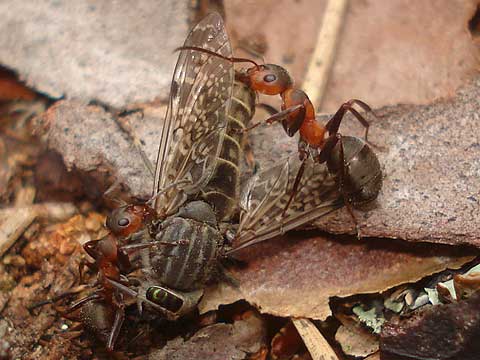
Ants are an important component of the biological soil community, and play many different roles. They break organic matter down into smaller components that can be consumed by smaller organisms, hunt and consume other arthropods, and some species burrow and live in the soil
Photo from Wikimedia Commons by Sanja565658
Macro-fauna – Earthworms
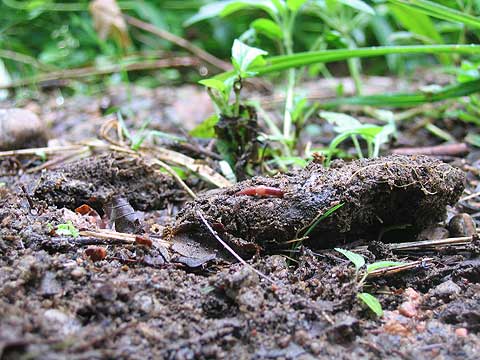
Earthworms are decomposers that help cycle nutrients throughout the soil
Photo: Tara Sackett, U of T (Missisauga)
Agroecosystem
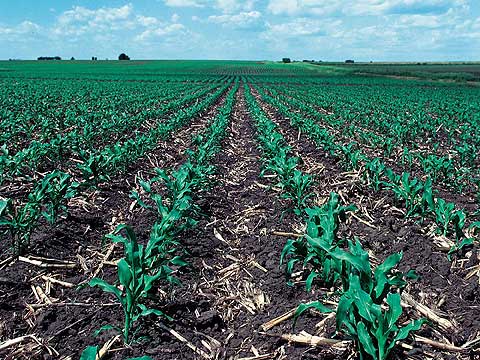
Soil biota are an important component of agroecosystems. Healthy populations keep agricultural systems well balanced
Photo courtesy of Lynn Betts USDA Natural Resources Conservation Service
Soil Biota
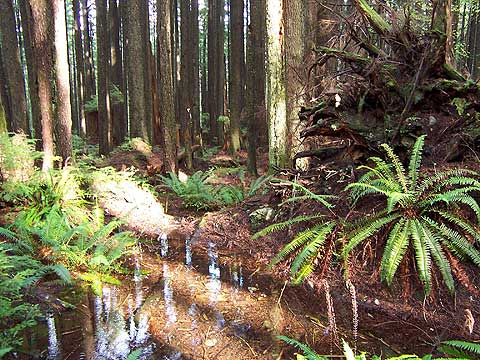
A healthy forest ecosystem is made up of diverse flora and fauna both above and below ground. Without the activities of soil organisms, organic materials would accumulate on the soil surface, and would not be available for uptake by plants
Photo by Nathan Basiliko, U of T (Mississauga)
Forestry Equipment
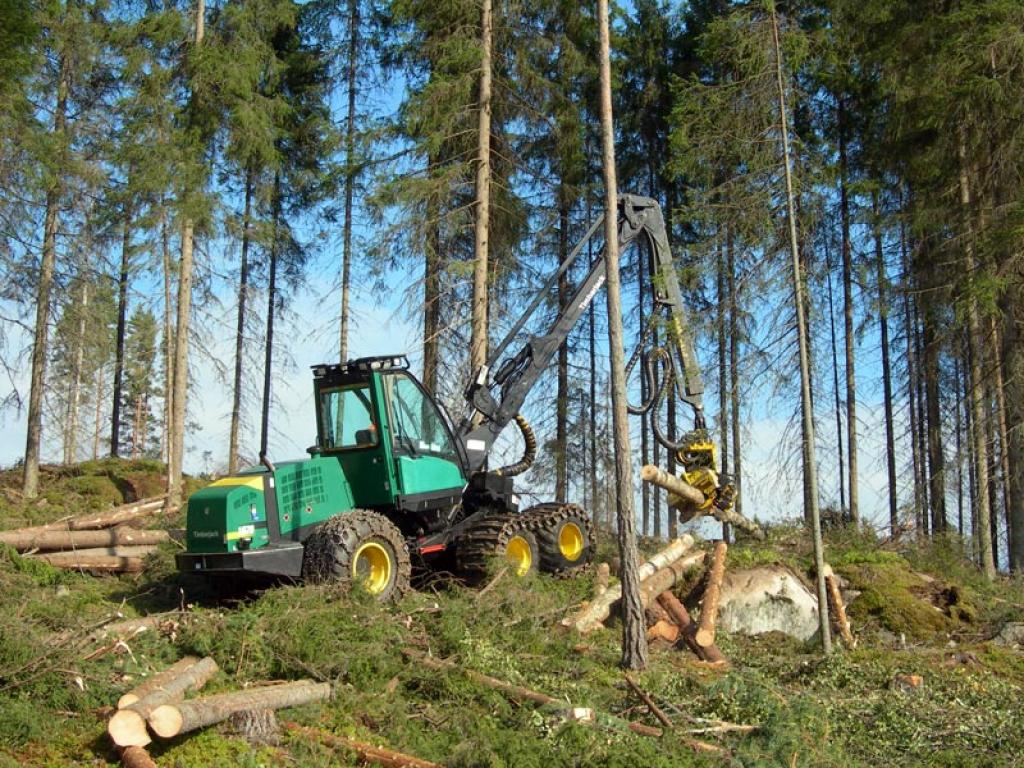
Large equipment moving across a forested landscape can lead to disturbance, such as soil compaction. In addition, earthworms and other biota can be transported between sites where equipment is operating
Photo by Heikki Valve on Wikimedia Commons, licenseed under CC-BY-SA-3.0
A Disturbed Ecosystem
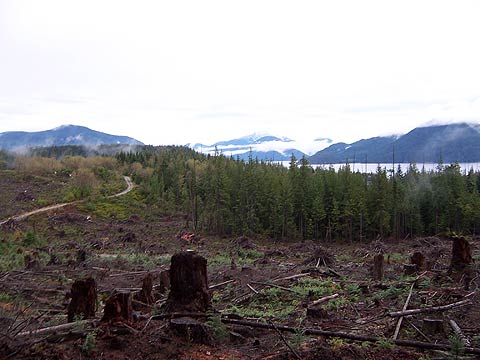
This photo of a clear cut forest shows an example of a disturbed ecosystem
Photo by Nathan Basiliko, U of T (Mississauga)
Collecting Earthworms
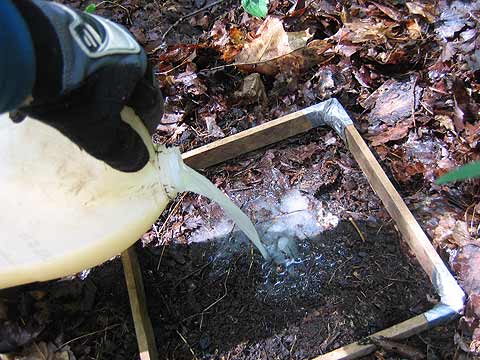
Earthworms can be collected from the soil by applying a liquid mustard solution. The earthworms come to the surface of the soil to avoid the solution
Tara Sackett, U of T (Mississauga)
Counting Earthworms
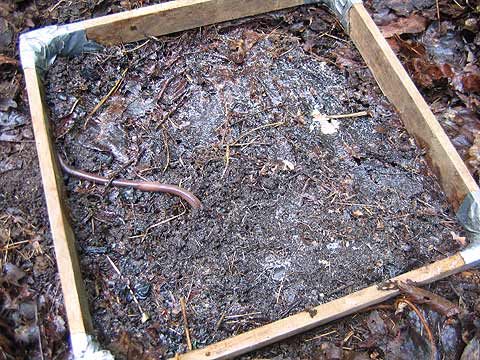
Earthworms slowly emerge from the ground after applying the liquid mustard solution and can be counted fr research purposes
Tara Sackett, U of T (Mississauga)
Earthworm Burrow

Earthworm burrows are often visible due to the middens (earthworm casts (i.e. poop)) around the burrow
Tara Sackett, U of T (Mississauga)
Molecular Biology Lab

Technology in the lab is used to help classify the organisms collected from the field
Photo by Nathan Basiliko, U of T (Mississauga)